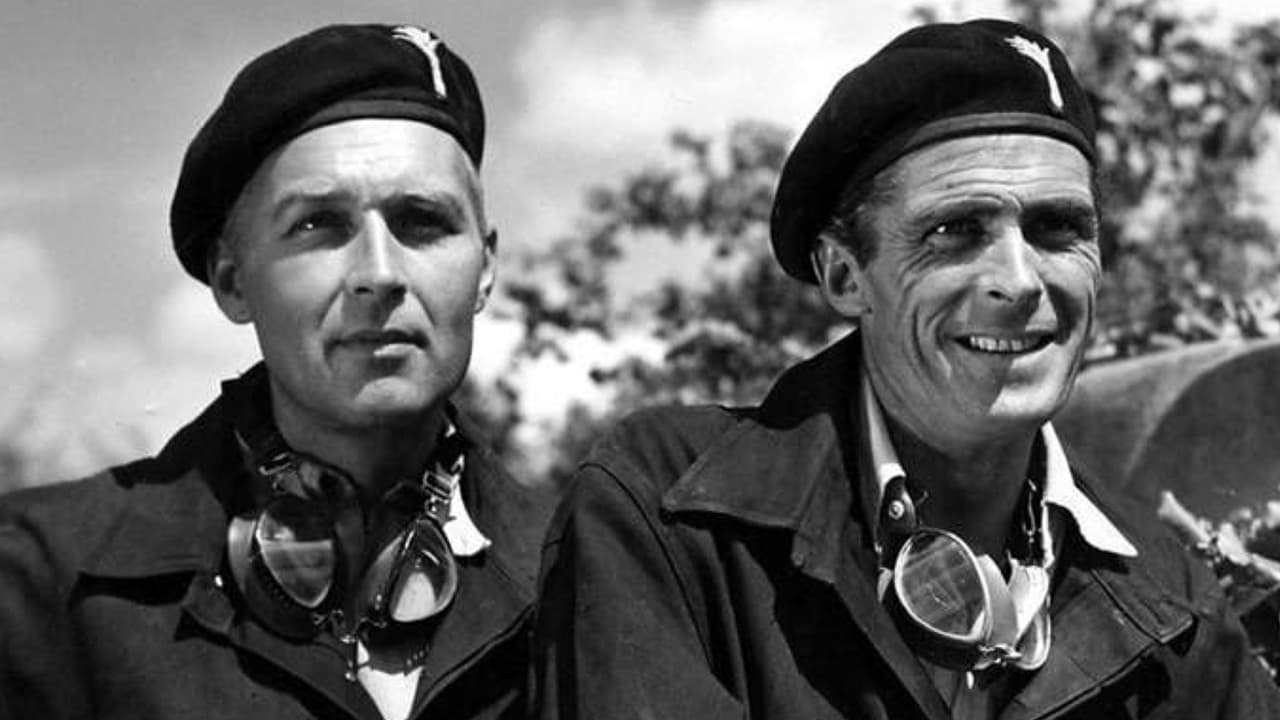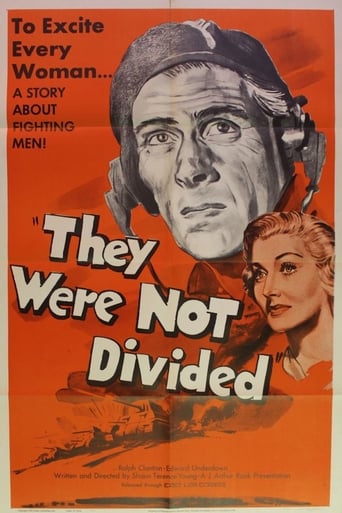

This Movie Can Only Be Described With One Word.
... View MoreA bit overrated, but still an amazing film
... View MoreThere is, somehow, an interesting story here, as well as some good acting. There are also some good scenes
... View MoreStrong acting helps the film overcome an uncertain premise and create characters that hold our attention absolutely.
... View MoreI was hoping for a more compelling film; but there was far too much dialogue, and not enough action. Especially, after the basic training section of the film, which is actually the better part of the movie. There were just too many bromides and cliches that were continually interfering with the natural evolution of the film. The actors did a competent job, as did the director, but the production values, to say the least, were slipshod. Maybe it was because it was an armored division. Armored division films of WW all seem to suffer from similar shortcomings; with the exception of Patton. Films like The Battle of the Bulge, The Battle of Alamein, Desert Fox, Rommel, and even the modern Fury with Brad Pitt, all had character development problems, action sequence problems, and pacing problems. Doing dialogue for these types of films is very difficult to accomplish; that is why very few of them are highly praised compared to infantry, naval, and air force films. The natural confining aspect of a tank does not lend itself to good development of dialogue. However, to be fair, the film is watchable and entertaining, and will satisfy most WW 2 genre fans.
... View MoreA middle class married Brit and an American working in London join the Welsh Guards armoured regiment at Caterham in 1940. We follow them through basic training, after which they are both commissioned. For the next few years nothing happens, except their tanks keep having to be repainted depending on where they are not going. Eventually they are landed in Normandy after D-Day, and then fight their way through to the Ardennes, where they are both killed. Along the way we meet a variety of characters, officers and men, to show the British Army at its best. Along the way also, the Brit gets leave to see his wife, and the American meets a nurse skinny dipping in a lake behind his friend's house. Just after Arnhem the two hitch a lift back to Northolt for 48 hours leave, during which time the American marries and impregnates the Englishwoman. What came over well in the film was the waiting of war, all the non-fighting activities which went on (including the liberation of German stores and supplies, such as champagne), the long drives through Europe, punctuated by hordes of delirious liberated French and Belgians, occasional sharp and terrifying battle moments, and the loss of friends though enemy action and careless accident. There was a great deal of actual wartime footage, interspersed with staged sequences using real wartime equipment (the tank rolling over was quite spectacular). Biggest goof was when the two officers come out of Northolt and hitch a lift to London in the wrong direction.
... View MoreTwo men join the Welsh Guards early in the war, one a married Englishman (Underdown), the other an American (Clanton). The Guards are a varied lot -- Irish, Welsh, and other "colonials" as well as the British. It leads to a quietly amusing scene. The drill instructor demands that all the English in the ranks take two steps forward and all the colonials take two steps backward. The American is left standing alone between the two. When he explains, the drill sergeant says the Army is divided into two parts, English and non-English, so Clanton steps back and joins the Canadians and the rest. That's about as funny as it gets.The first half of the film belongs to the "training camp" genre. "Button up that top button!" "SAH!" Underdown gets to spend time with his wife and both of them become close friends of Clanton, who falls in love with a British beauty he finds swimming in "the Witch's Pool." There's nothing much we haven't seen before.The second half has the two men in tanks, landing at Normandy and rushing through what appears to be every battle of any significance in the European theater. There are a few combat scenes. One is unique. A British tank is hit (whether by mine or German shell we never know), skids off the road, and rolls onto its side.But the combat is hurried and conveyed by montage -- tanks wheels spin, airplanes roar overhead, parachutists drop from the sky, explosions take place, men stop for tea and make easy jokes about one another. It seems to have been put together for people who have already been there or who remember the meaning of place names like Arnhem, Caen, the Ardennes, and Nijmegen. If you don't know, it's going to seem as if the Welsh Guards land their tanks and race through Europe, losing an occasional vehicle.If you keep your eyes and ears open, you may learn why Montgomery was so slow taking Caen, while Patton zoomed South and around into mid-France. At the end, Clanton lies wounded, tended by Underdown, and both friends are destroyed by a German 88. The Irishman who buries them plants an American flag one on grave and an English flag on the other, but he can't remember which grave is which, so he leaves them at random. The wind whips the two tiny flags until they dip towards one another and finally touch. It's an excessively pathetic ending but I found it moving nevertheless.There's nothing particularly innovative about the movie. It's mostly stuff we've seen before. And it seems more dated than most British war movies of the period, which tended to be quite good. The message is in boldface: "We Must All Pull Together," English and Americans, Irish, Welsh, and so forth. But by 1950 the war had been over for several years, so what was the point? An apologia for the American servicemen who were "overpaid, oversexed, and over here"? But they were mostly gone when this movie was made. That's what I mean by the word "dated." I found the courtship of the American and his British swimming mate kind of interesting. During the war, American men are supposed to have thought that British girls were "fast"; ie., easy. At the same time, British girls considered American men "fast"; ie., too eager to become engaged and married. Margaret Mead, the anthropologist who was there at the time, concluded that the misunderstanding was due to differences in courtship patterns. For Americans, kissing came early in the process. For Brits, it was a much later step, signaling serious commitment, just prior to marriage. Thus, culture clash according to the Venerable Mead.As I say, I found the last scene to be poignant, though I knew I was being recklessly manipulated. Well, after all, we've just spent 92 minutes with two polite fellows who have never harbored a harsh thought towards each other or anyone else.
... View MoreThis is an early work of Terence Young, the director, but a well-made, engrossing and ultimately very moving British war drama of World War II. Interestingly a very young Desmond Llewelyn has a cameo role as a Welsh tank commander, and when it came time for Young to find a new Q for the second James Bond movie, the original no longer being available, he remembered Llewelyn and cast him in what is now the longest running continuous role in the James Bond saga.
... View More